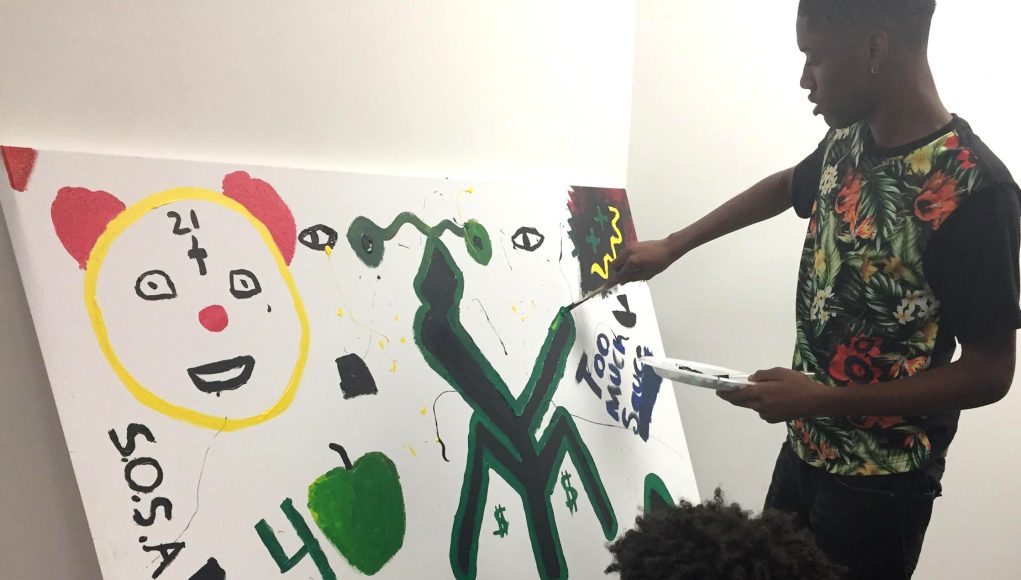In continuous efforts to mitigate racial disparity in Madison, Making Justice is providing a creative space for at-risk or court-involved youth to use art as an outlet for self-expression and to empower their voices.
An art program funded by the Madison Public Library, Making Justice holds weekly workshops for teenagers ages eleven to seventeen to engage in art through a “social justice lens.” First created in 2014, the arts program was created to advance the Wisconsin Idea initiative to address “the nation’s widest black/white educational achievement gap and highest per capita black juvenile arrest and incarceration rate in Dane County, Wisconsin,” according to the Making Justice website.
Making Justice serves over 400 kids who are mainly youth of color and come from low-income families. It is an initiative that aims to use art as means to interrupt the school-to-prison pipeline says Carlos Gacharná, a recent arts major graduate from the University of Wisconsin-Madison and facilitator of the program.

A unique aspect of Making Justice is it runs in partnership with college students at UW-Madison, who help create and facilitate the workshops with the students as well as serving as mentors to the kids in the program. The opportunity to connect college students and the community’s disadvantaged youth fosters the growth of the kids in the program and enables them to envision attending college and pursuing their aspirations as a reality, Gacharna added.
“The act of inviting them to different campus spaces and getting them to hang out with college students, all of the sudden college stops becoming an idea and becomes a place – somewhere they’ve been before and can go again,” Garcharna said. “I think having that change of mentality makes it way easier and I’ve seen it; the kids come in and don’t seem like they care about school but two months later they’re talking about when they’re going to college.”
Along with connecting the kids with college students, Making Justice seeks to educate the teenagers through art. Making Justice is taught by facilitators and even professors such as Faisal Abdu’allah, an associate professor of the Arts Department at UW and world renowned visual artist from England. Abdu’allah is known for incorporating race, masculinity, and violence in his screen printing, printed media, film, and his other works and volunteers his time to work with Making Justice students.

The youth of color who enroll in Making Justice are taught and introduced to various art forms including creating black light chalk and neon light, which incorporate teaching science concepts while creating art. The weekly workshops also include screen printing, stop motion animation workshop, video game design, producing music, and writing and verbal performance workshops. The aim of these workshops is to educate the students and equip them with skills to express themselves and cope with their adversities, as well as give them a space to just be kids, Gacharna says.
“A lot of these kids don’t really get to be kids. They’re either treated like parents when they’re at home because they have to take care of their parents or they’re treated like criminals when they’re in the system,” Gacharna says. “If you can just take those kids, have them have fun for a couple of hours and let them be kids, I think that’s really healthy for them.”
One high school junior in Making Justice named Kamo Butler said that the program has given him a sense of community and has helped him become more open-minded.

“I like being part of a group. It’s good to be around a lot of creative minds so you get to bounce ideas around with other people and it opens you to things that you wouldn’t have thought about before,” Butler said.
One of Butler’s favorite memories of Making Justice was being able to use the media lab to produce and write music and working with Abdu’allah, who also produces music. In the future, he would like to pursue a career in producing Hip Hop music and rapping. He said that his experience has been “enlightening” and taught him good values and ways to go about certain situations.
Another high school junior, Seoquoia Holmes, said that Making Justice has helped her find a calming outlet through utilizing art. She added that it made her realize her passion for art and wants to produce music in the future.
Making Justice, in its mission to interrupt the racial disparity in education, has impacted hundreds of youth of color locally and continues to provide a safe space for at-risk youth to become educated through art and give them a community to grow. With the support of UW students and staff, the Madison Public Library and the community, Making Justice is empowering the youth of color through various art forms and hopes to continue to reach and benefit more of Dane County’s youth.




























